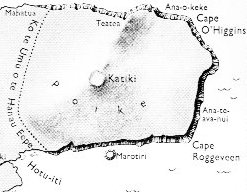|
ADDENDA
222.10 But it is far from obvious where the creator of the D tablet had decided to locate the 6 'sleeping bags' in time-space. Although 54 days could offer us a clue:
Because counted from the beginning of the year day 54 is February 23 (= 54 - 31), a date which surely ought to have been known also on ancient Easter Island. Because in Roman times it was named Terminalia, the end station. From this idea follows that we can see a correspondence between those peculiar 6 days in line Da8 and the 6 days which ended with March 1 (31 + 28 + 1 = 60 = 54 + 6). Side a on the D tablet could accordingly end with March 1. Or with February 29: ... The leap day was introduced as part of the Julian reform. The day following the Terminalia (February 23) was doubled, forming the 'bis sextum - literally 'double sixth', since February 24 was 'the sixth day before the Kalends of March' using Roman inclusive counting (March 1 was the 'first day'). Although exceptions exist, the first day of the bis sextum (February 24) was usually regarded as the intercalated or 'bissextile' day since the third century. February 29 came to be regarded as the leap day when the Roman system of numbering days was replaced by sequential numbering in the late Middle Ages ... Which implies the first 66 glyphs on side a should correspond to the last 66 days of the previous year. We now have a hypothesis to be tried:
It should here be added that when the Chileans took control of the island it was at the opposite side, viz. at the 3 volcanic (fire) cones up on the Place Aloft (Poike).
3 + 3 = 6 → 336 → Da3 (cfr above) → December 2 (366 - 30). There was a pair, the Upper and the Lower kingdoms, Hanan and Hurin. Which could explain why 212 glyphs were incised into the D tablet. 414 (→ *41.4 at Bharani) - 66 = 348 (→ 29 * 12) = 136 (*136 at Alcyone) + 212 (glyphs on the D tablet). Therw were 2 sides on everything (front and back).. Because this time-space map could have been brought along from Colombia.
|
|||||||||||||||||||||||||||||||||||||||||||||||||||||||||||||||||||||||||||||||||||||||||||||||||||||||||||||||||||||||||||||||||||||||||||||||||||||||||||||||||||||||||||||||||||||||||||||||||||||||||

